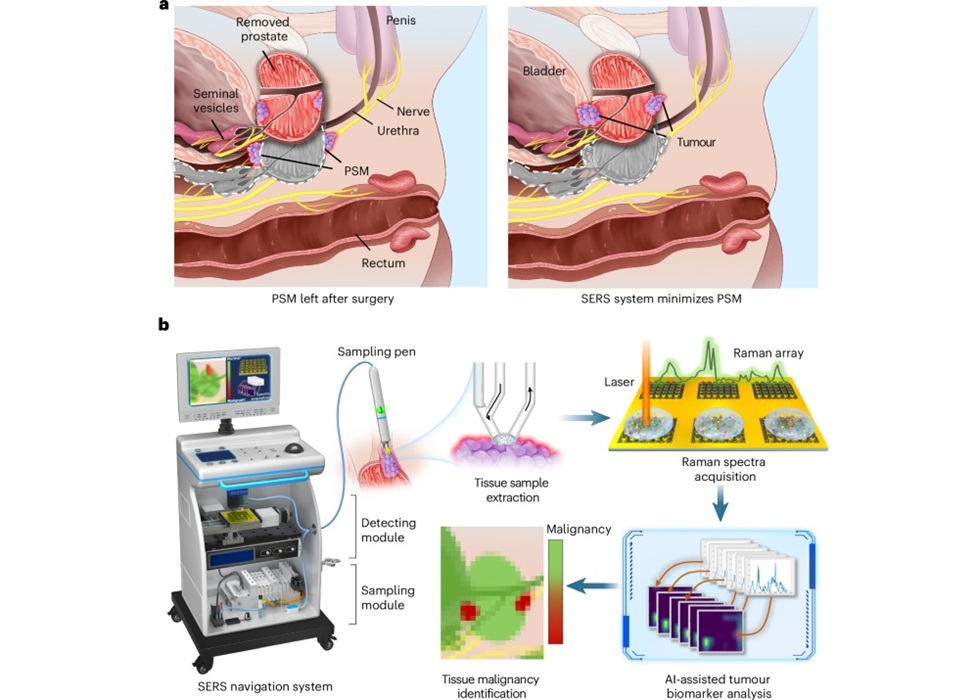Groundbreaking Solution Offers Continuous ICU-Level Noninvasive Hemodynamic Monitoring
|
By HospiMedica International staff writers Posted on 16 Oct 2024 |
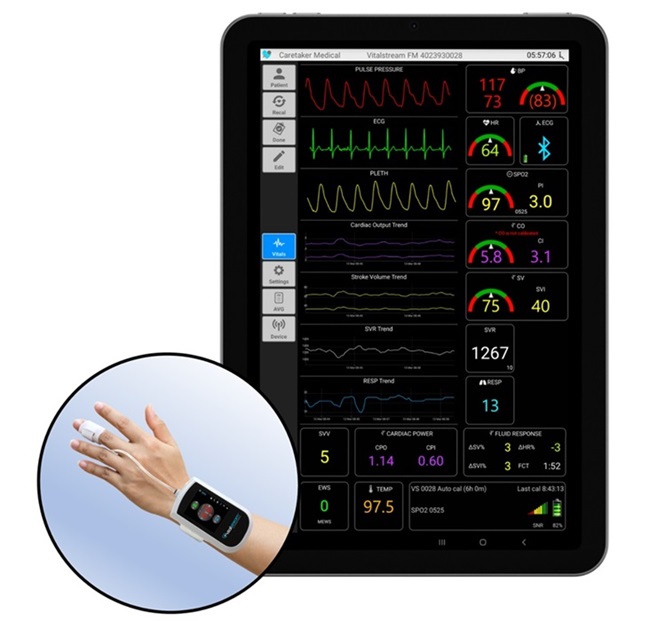
Hemodynamic instability ranks as the second most common reason for ICU readmissions, accounting for 31% of cases. Additionally, hospital mortality rates are significantly higher for patients who experience readmission. A new wireless, noninvasive hemodynamic monitoring system now equips clinicians with the continuous data needed to help minimize complications and shorten ICU length of stay (LOS).
Caretaker Medical’s (Charlottesville, VA, USA) VitalStream hemodynamic monitoring system employs AI algorithms and patented Pulse Decomposition Analysis (PDA) to continuously track over 20 vital sign parameters, including blood pressure, cardiac output, stroke volume, systemic vascular resistance, and fluid status, among others. The patented PDA technology and AI algorithms derive continuous hemodynamic parameters by analyzing the reflective pulse wave morphology within the arterial tree. The device can be fitted, calibrated, and begin monitoring in just 90 seconds, utilizing an innovative low-pressure finger sensor that can be comfortably worn by conscious patients throughout their hospital stay. The comfortable finger sensor and a familiar tablet interface create a premier, wire-free monitoring experience for both clinicians and patients.
VitalStream is the only FDA-cleared wireless, wearable continuous cardiac output (CCO) and noninvasive blood pressure (NIBP) monitor that combines intuitive, user-friendly technology with the clinical precision required from an acute-care hemodynamic monitor. VitalStream eliminates monitoring blind spots and delivers essential information that allows clinicians to accurately assess volume status and adjust pressors or inotropes as needed. Continuous vital signs data and live waveforms are presented on a tablet through the Caretaker app, which offers clinicians a modern experience that can be easily learned with minimal training. VitalStream has been validated through all-comer studies and has demonstrated the ability to provide accurate and reliable data across high-risk patient populations.
“VitalStream offers a valuable solution by enabling continuous hemodynamic monitoring without the need for invasive lines or constant IV fluid infusion. This technology can help ensure patient safety and optimize fluid management during these challenging times,” said Johnny Mann, VP Sales and Marketing at Caretaker Medical.
Related Links:
Caretaker Medical
Latest Critical Care News
- Magnetically Guided Microrobots to Enable Targeted Drug Delivery

- Smart Nanomaterials Detect and Treat Traumatic Brain Injuries Simultaneously
- Earlier Blood Transfusion Could Reduce Heart Failure and Arrhythmia in Heart Disease Patients
- 'Smart' Shirt Detects Epileptic Seizures in Real Time
- Skin Patch Measures Effectiveness of Flu/COVID Vaccines in 10 Minutes
- Complete Revascularization Reduces Risk of Death from Cardiovascular Causes
- Tiny Fish-Inspired Robots Navigate Through Body to Deliver Targeted Drug Therapy
- Coronary Artery Stenosis Could Protect Patients from Pulmonary Embolism Effects
- Sweat-Powered Sticker Turns Drinking Cup into Health Sensor
- Skin-Mounted 3D Microfluidic Device Analyzes Sweat for Real-Time Health Assessment
- New Therapeutic Brain Implants to Eliminate Need for Surgery
- Stem Cell Patch Gently Heals Damaged Hearts Without Open-Heart Surgery
- Biomaterial Vaccines to Make Implanted Orthopedic Devices Safer
- Deep Learning Model Predicts Sepsis Patients Likely to Benefit from Steroid Treatment
- Programmable Drug-Delivery Patch Promotes Healing and Regrowth After Heart Attack
- Breakthrough Ultrasound Technology Measures Blood Viscosity in Real Time
Channels
Surgical Techniques
view channel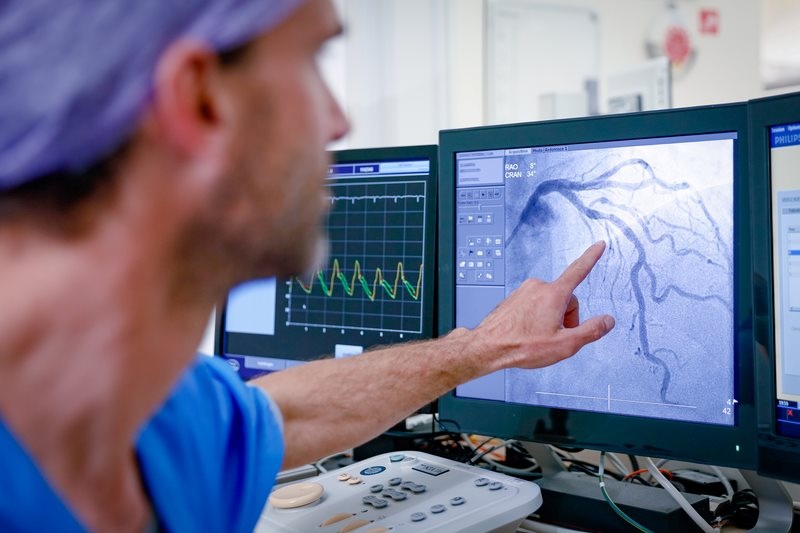
New Study Findings Could Halve Number of Stent Procedures
When a coronary artery becomes acutely blocked during a heart attack, opening it immediately is essential to prevent irreversible damage. However, many patients also have other narrowed vessels that appear... Read more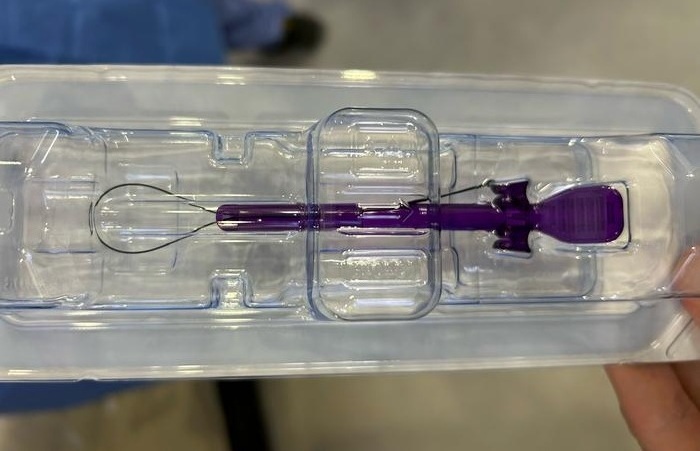
Breakthrough Surgical Device Redefines Hip Arthroscopy
Hip arthroscopy has surged in popularity, yet surgeons still face major mechanical constraints when navigating deep joint spaces through traditional cannulas. Limited tool mobility and the need for an... Read morePatient Care
view channel
Revolutionary Automatic IV-Line Flushing Device to Enhance Infusion Care
More than 80% of in-hospital patients receive intravenous (IV) therapy. Every dose of IV medicine delivered in a small volume (<250 mL) infusion bag should be followed by subsequent flushing to ensure... Read more
VR Training Tool Combats Contamination of Portable Medical Equipment
Healthcare-associated infections (HAIs) impact one in every 31 patients, cause nearly 100,000 deaths each year, and cost USD 28.4 billion in direct medical expenses. Notably, up to 75% of these infections... Read more
Portable Biosensor Platform to Reduce Hospital-Acquired Infections
Approximately 4 million patients in the European Union acquire healthcare-associated infections (HAIs) or nosocomial infections each year, with around 37,000 deaths directly resulting from these infections,... Read moreFirst-Of-Its-Kind Portable Germicidal Light Technology Disinfects High-Touch Clinical Surfaces in Seconds
Reducing healthcare-acquired infections (HAIs) remains a pressing issue within global healthcare systems. In the United States alone, 1.7 million patients contract HAIs annually, leading to approximately... Read moreHealth IT
view channel
EMR-Based Tool Predicts Graft Failure After Kidney Transplant
Kidney transplantation offers patients with end-stage kidney disease longer survival and better quality of life than dialysis, yet graft failure remains a major challenge. Although a successful transplant... Read more
Printable Molecule-Selective Nanoparticles Enable Mass Production of Wearable Biosensors
The future of medicine is likely to focus on the personalization of healthcare—understanding exactly what an individual requires and delivering the appropriate combination of nutrients, metabolites, and... Read moreBusiness
view channel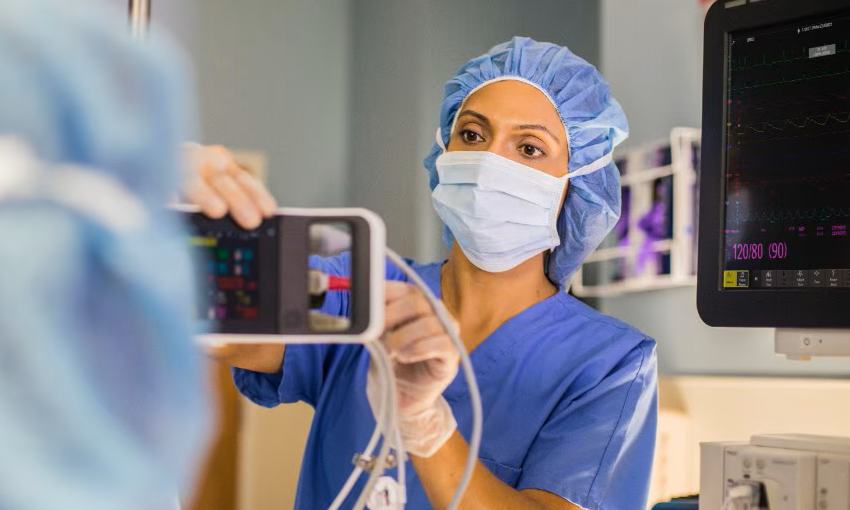
Philips and Masimo Partner to Advance Patient Monitoring Measurement Technologies
Royal Philips (Amsterdam, Netherlands) and Masimo (Irvine, California, USA) have renewed their multi-year strategic collaboration, combining Philips’ expertise in patient monitoring with Masimo’s noninvasive... Read more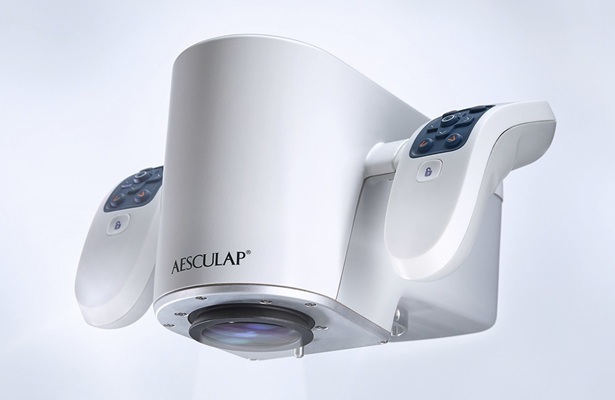
B. Braun Acquires Digital Microsurgery Company True Digital Surgery
The high-end microsurgery market in neurosurgery, spine, and ENT is undergoing a significant transformation. Traditional analog microscopes are giving way to digital exoscopes, which provide improved visualization,... Read more
CMEF 2025 to Promote Holistic and High-Quality Development of Medical and Health Industry
The 92nd China International Medical Equipment Fair (CMEF 2025) Autumn Exhibition is scheduled to be held from September 26 to 29 at the China Import and Export Fair Complex (Canton Fair Complex) in Guangzhou.... Read more












